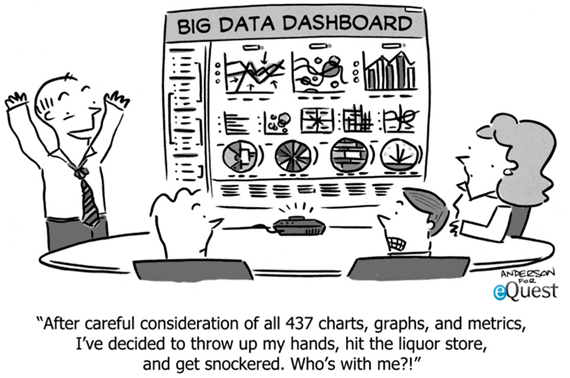Selling Your Boss on Investing in Analytics
Post on: 16 Март, 2015 No Comment

At Adobe Summit 2015, Jeff Allen (@JeffreyAAllen) with Adobe presented this session about justifying an investment in analytics. Jeff has developed a model for this over the past 20 years. His mantra comes from Harvard Business School professor Clay Christensen: Instead of telling someone what to think, I taught him how to think.
Here are the steps in Jeffs model:
Learn the landscape
Understand the analytics buying team. Often its a CxO teaming with a CIO. Below the CxO is the budget approver, the decision maker and the feature evaluator. On the IT side, there is also a feature evaluator and typically a VP/Senior leader involved.
When looking at the Technology Purchaser Messaging Matrix, address the individual contributor who is a technical purchaser like an analyst, IT manager, etc. These people are the evaluators. They dont want to hear from their peers that what they bought stinks. The IT evaluator has to make sure the product meets the IT standards.
On the business side, you want to address the CMO, VP Marketing, etc. These are the approvers. They usually approve the budget but dont make purchase decisions. Typically they are interested in consensus among the buying team. They are interested in stability and reputation of the vendor.
Somewhere in the middle are the decision makers who would be directors, sr directors, etc. They look at how to make or save money, not features or experience. Their job is to build the business case for anything they buy.
In other words, decisions are made in the middle !
Learn the Language
Schedule a meeting to discuss how this will address a specific business needs. Bring a perspective on business justification. For analytics, dashboards are a good area.
There is a fallacy that if you can get to the right executive who can single handedly approve a deal. Executives are really looking for consensus from their team to approve a purchase.
When an executive gets excited about a product, they are good at handing out assignments that hold the decision makers feet to the fire. Adobe has myanalyticsscore.com that can help you figure out your maturity.
Weigh the Value
Instead of bludgeoning people with endless fact and features, bring unique insights about how the business can make or save money. (See the book The Challenger Sale). Here are some values you can weigh in your justification:
- Multi-/Cross-Channel Analytics Views
- More Advanced Analytics
- Real time data
- Replacing an outdated product
- Overcome data limitations
- More functionality to support strategy change
- Easier to use tools

Qualify the Value
Here is how organizations qualified the value:
Saving money
- Time Savings / Efficiencies from fewer better tools
- Smarter investments, Higher MROI
- Better Targeting
- Fewer Resources
- More useful info
- Ability to monetize to offset cost
Make Money
- Identify cross selling
- Increased revenue
Here are some other ways:
- Standardize on a single vendor
- Bringing new insights
Quantify the Value
You need to separate hard and soft ROI. For hard ROI, it has to be cleaHard ROI
- Clearly quantifiable cost savings or sales/revenue increases. For example, a 50% reduction in time required to prepare weekly scorecards
Soft ROI
- Loosely quantifiable cost savings or sales/revenue increase. For example, better targeting will lead to higher conversion rates.
Jeff provided a series of equations to calculate various savings and revenue numbers for the ROI estimates.














